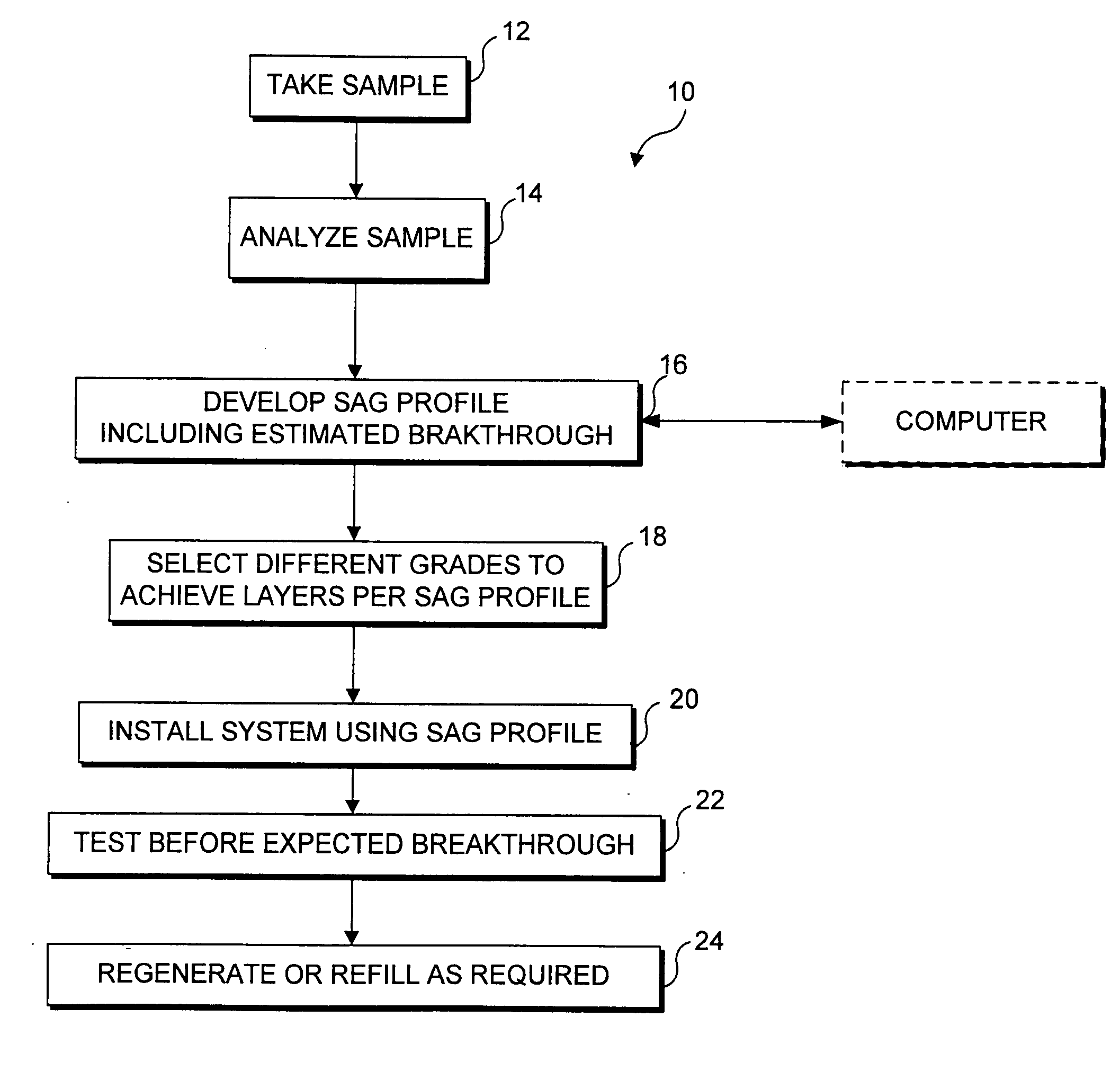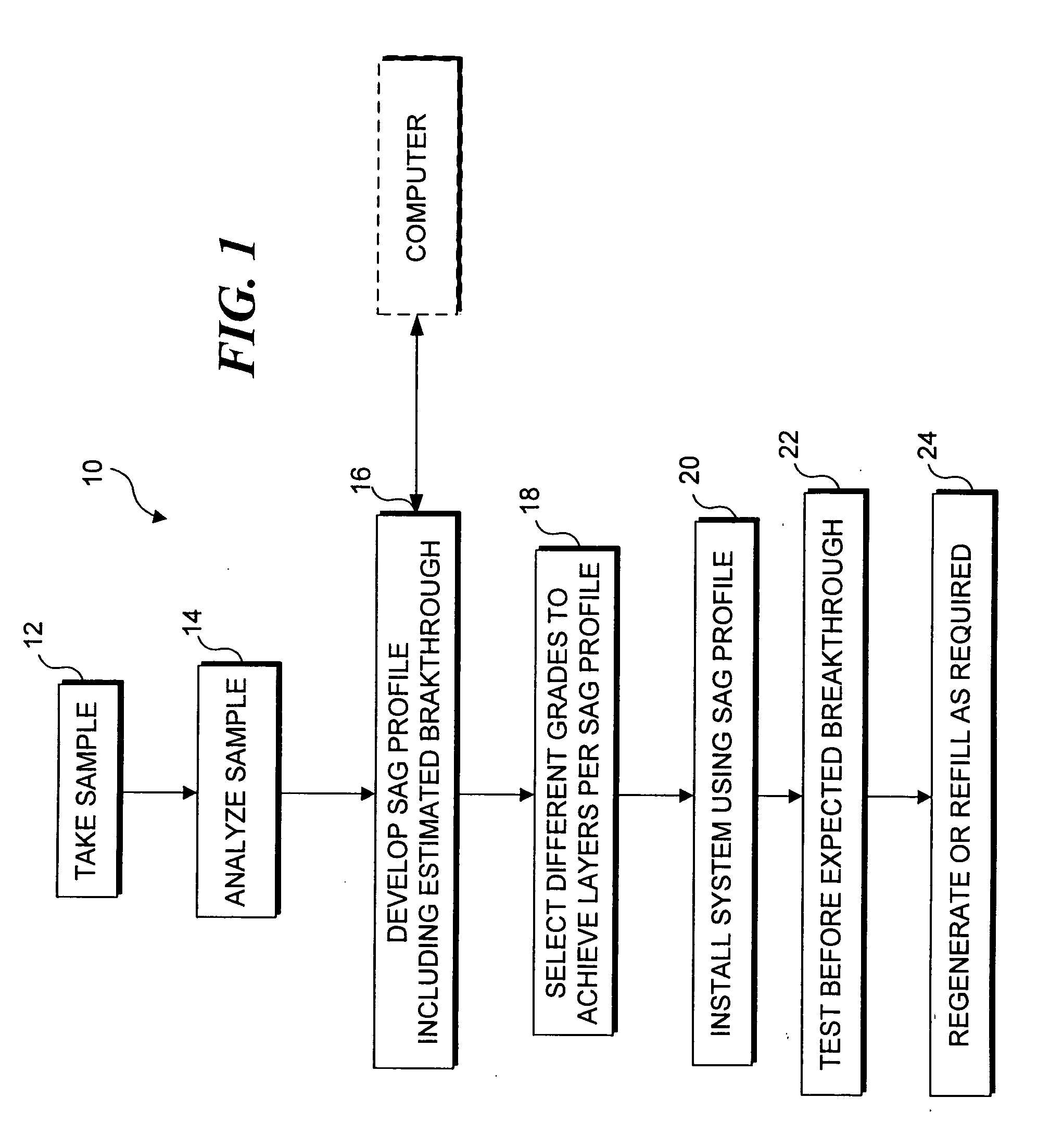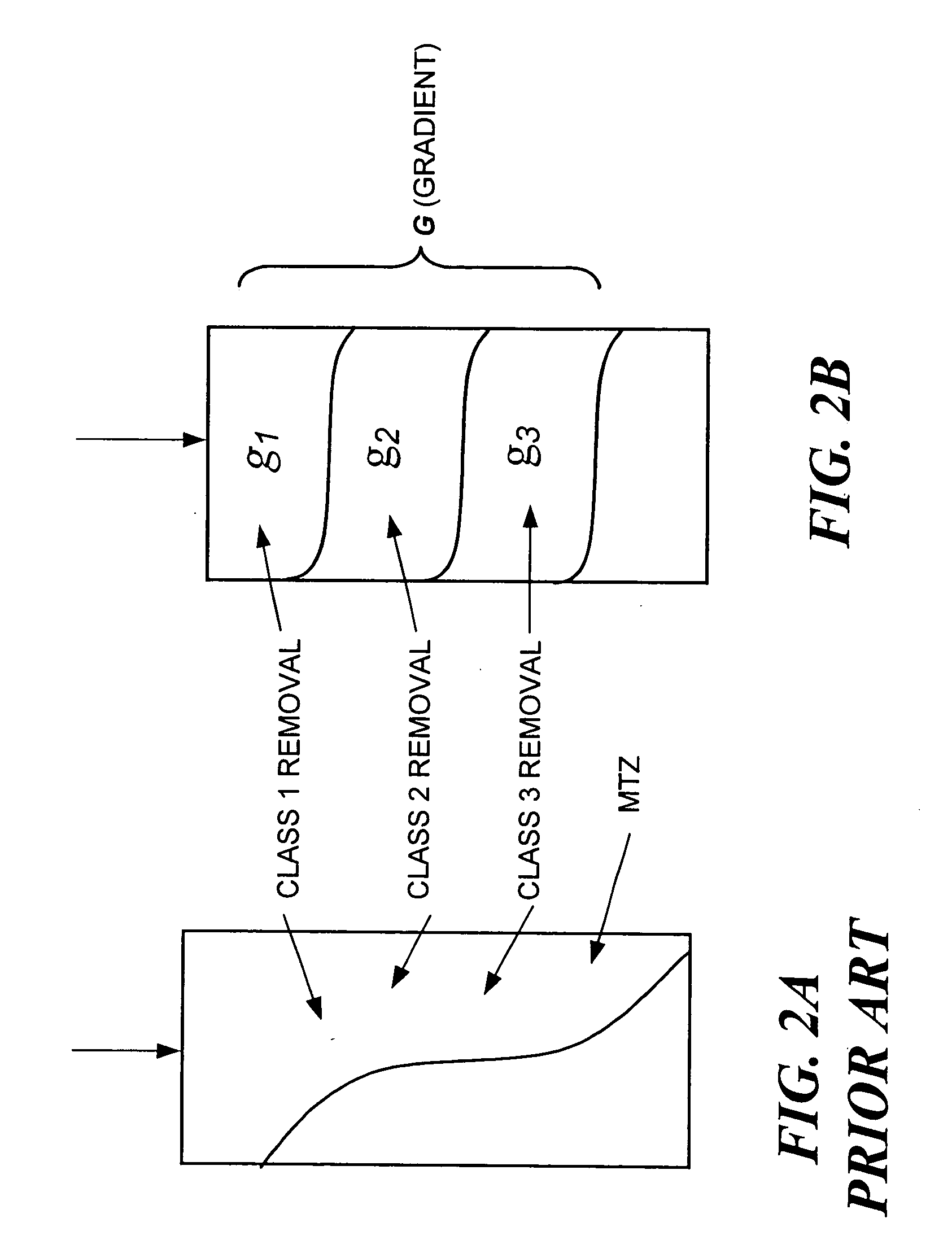Removing siloxanes from a gas stream using a mineral based adsorption media
a technology of mineral based adsorption media and siloxane, which is applied in the direction of colloidal chemistry, other chemical processes, separation processes, etc., can solve the problem that the conventional (i.e., not specially modified) silica gel is unusable as hox media, and achieve the effect of efficient removal
- Summary
- Abstract
- Description
- Claims
- Application Information
AI Technical Summary
Benefits of technology
Problems solved by technology
Method used
Image
Examples
Embodiment Construction
Overview
[0036] In the present invention, a filter media available with a range of properties (such as pore size) that can be tightly controlled is used to filter a gas stream to remove siloxanes. An inorganic filter media, generally similar to silica gel, and a carbon-based polymorphous graphite, both available with tightly controlled properties (including a relatively narrow range of pore sizes), are utilized in various embodiments of the present invention. It should be understood however, that the present invention encompasses the use of the mineral-based adsorbent media alone, as well as the use of the mineral-based adsorbent media with conventional carbon adsorbents.
[0037] Preferably, siloxanes are removed from a gas stream using a plurality of different grades of adsorbent media, each grade of adsorbent media having been specifically selected to preferentially remove a single contaminant (or a class of contaminants). Generally, the pore size of the adsorbent media will be a ...
PUM
| Property | Measurement | Unit |
|---|---|---|
| pore size | aaaaa | aaaaa |
| pore sizes | aaaaa | aaaaa |
| pore sizes | aaaaa | aaaaa |
Abstract
Description
Claims
Application Information
 Login to View More
Login to View More - R&D
- Intellectual Property
- Life Sciences
- Materials
- Tech Scout
- Unparalleled Data Quality
- Higher Quality Content
- 60% Fewer Hallucinations
Browse by: Latest US Patents, China's latest patents, Technical Efficacy Thesaurus, Application Domain, Technology Topic, Popular Technical Reports.
© 2025 PatSnap. All rights reserved.Legal|Privacy policy|Modern Slavery Act Transparency Statement|Sitemap|About US| Contact US: help@patsnap.com



